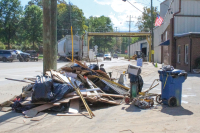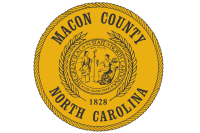I don’t get it: A Review of ‘The Ballad of Laurel Springs’

Sometimes a book I’ve read, particularly a novel, will leave me mystified, which is not always a good thing.
In “The Atomic City Girls,” which I reviewed for Smoky Mountain Living, Janet Beard takes her readers off to Oak Ridge, Tennessee, a new town founded as part of the Manhattan Project and the development of the atomic bomb. She lets us see this top-secret project through the eyes of several young women, primarily June Walker, who are hired to work there. “The Atomic City Girls” is a fine historical novel blending real figures with fictional characters.
In her latest work of fiction, “The Ballad of Laurel Springs” (Gallery Books, 2021, 288 pages), Beard returns to the hills of Eastern Tennessee, this time to the community of Tates Valley. When the story opens, the year is 2019, and we meet Grace, a fifth-grader assigned a language arts project at school which involves writing a family story. Grace’s young Aunt Dee tells her a tale of ancestral love and murder that occurred over a century earlier and involves the folk song, “Pretty Polly,” and that’s the story Grace researches and writes.
From there we slide back in time to 1907, and as the subsequent chapters of “The Ballad of Laurel Springs” move us into the future, we learn more about the tangled history of Grace’s family tree, a saga of love and death haunted by “Pretty Polly” and other folk songs. The murder of a young pregnant woman at the beginning of this story hangs over these folks, and the secrets they keep as the years pass live with them like ghosts.
The outside world affects these families as well. In early 20th century, two women from Atlanta come to open a formal school in Tates Valley. Pearl, young and pregnant, asks her husband Abel,
“Why do they want to set up a school here?”
Related Items
“It’s charity, Pearl. They’re missionaries.”
“I thought missionaries only went to primitive places, like… China, or South Dakota.”
Abel has a way of half-smiling at me that makes me feel a bit stupid, and he did it then. “They reckon we is primitive.”
A much greater change comes some years later with the advent of The Great Smoky Mountains National Park. The government buys up the houses and farms owned by many of these people, resettles them, and returns their land to forests and natural meadows. Even later, further change introduces the descendants of this extended family to communes of hippies and then to drugs.
Meanwhile, through all these developments the spirit of the murdered woman hovers over the valley.
With these jumps forward in time and with its wide variety of characters, “The Ballad of Laurel Springs” might cause some readers confusion. In my case, I had to keep flipping back to previous chapters to recollect a relationship or an incident from the past.
But that’s not why the novel left me a little puzzled.
The blurb on the book’s jacket describes The Ballad of Laurel Springs as “an unforgettable portrait of women fighting to make a safe place in the world for themselves and the people they love.” It’s true that several of these women are in bad marriages — I lost track of the number of them who got pregnant before they entered into wedlock — and that only a few of the men appear in a favorable light.
Yet I am not convinced these women are “fighting to make a safe place in the world for themselves.” One of them, for instance, is essentially raped by an strange-acting high school boy, Jeremiah. Twenty years later, when she is a wife and mother, and Jeremiah returns as a grown man to attend his father’s funeral, she in turn seduces him. When she goes home and her husband asks her how she ripped her skirt, she offers some excuses, but then tells him Jeremiah had raped her, which results in the husband and a friend murdering and burying the falsely accused assailant. In a later episode, a young teacher, who claims her husband is showing little interest in her, has sex with one of her students at the high school — he has just graduated — then confesses everything to her husband. When the boy later comes to their house, beating on the door, begging to see her, and provoking the husband with insults, we witness another betrayal that ends in violence.
Consequently, I just didn’t understand exactly what Beard wanted readers to take away from this book.
Then I glanced at the cover letter the publisher had sent with my review copy and read, “‘The Ballad of Laurel Springs’ considers: violence against women over the course of several generations, the link between violence and the folk songs made popular by Johnny Cash, Dolly Parton, Willie Nelson, Nick Cave, and others and how disrespect against women is built into the culture as evident in our songs.”
That sentence brought a little sunshine through my fog, but I still don’t fully understand what Janet Beard is getting at here. If one point to the novel is to show the connection between violence against women and misogynistic folk songs, then why are so many of the females in the story singing these very songs? And if we’re supposed to see these women “fighting to make a safe place in the world for themselves and those they love,” then why are they themselves at times mistreating, betraying, and abusing men?
It seemed to me that several of these women disrespected themselves more than the men did. As a Tennessee woman once said to me, “I’m just plain bumfuzzled.”
(Jeff Minick reviews books and has written four of his own: two novels, “Amanda Bell” and “Dust On Their Wings,” and two works of nonfiction, “Learning As I Go” and “Movies Make the Man.” This email address is being protected from spambots. You need JavaScript enabled to view it.)









